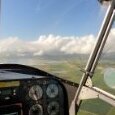-
Posts
3,566 -
Joined
-
Last visited
-
Days Won
62

Blueadventures replied to FlyingVizsla's topic in Aircraft Incidents and Accidents

Blueadventures replied to Blueadventures's topic in AUS/NZ General Discussion

Blueadventures replied to FlyingVizsla's topic in Aircraft Incidents and Accidents

Blueadventures replied to Garfly's topic in AUS/NZ General Discussion

Blueadventures replied to Garfly's topic in AUS/NZ General Discussion

Blueadventures replied to skippydiesel's topic in Trips/Events/Seats

Blueadventures replied to Garfly's topic in AUS/NZ General Discussion

Blueadventures replied to BurnieM's topic in Aircraft Incidents and Accidents

Blueadventures replied to red750's topic in AUS/NZ General Discussion

Blueadventures replied to skippydiesel's topic in Instruments, Radios and Electronics

Blueadventures replied to Garfly's topic in AUS/NZ General Discussion

Blueadventures replied to Garfly's topic in AUS/NZ General Discussion

Blueadventures replied to Blueadventures's topic in Engines and Props

